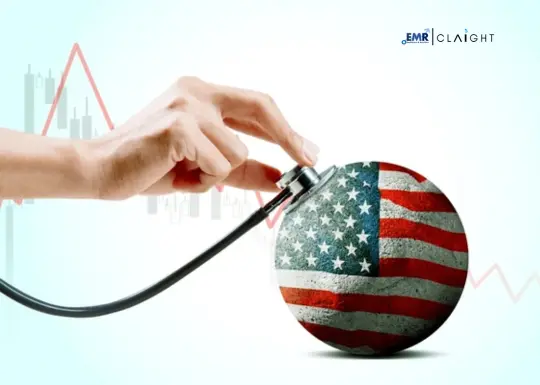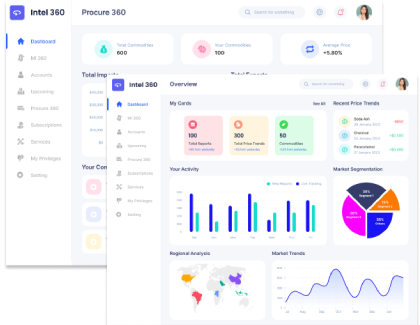A New Executive Order to Tackle an Old Problem
On May 12, 2025, President Trump issued an executive order that dealt with a persistent issue in the American healthcare system: extraordinarily high drug prices. The contention of his administration was that pharmaceutical companies sell prescription drugs at significantly lower prices in foreign countries compared to the United States and compensate by overcharging American consumers. The administration claims that the revenue from the United States funds pharmaceutical research and development that results in the creation of novel drugs for a variety of disease conditions. The principal argument was that American drug consumers were subsidizing the prescription drugs sold in foreign countries and thereby experiencing disproportionate financial strain in drug purchases. The administration has taken a multipronged approach to mitigate this issue as they understand it, for the dual purpose of reducing prescription drug prices by compelling drug manufacturers to sell drugs at the most-favored-nation price in the U.S while also creating structured incentives to encourage domestic drug manufacturing. Here is a lucid overview of everything this order aims to achieve:
American Consumers Must Pay Most-Favored-Nation Prices Only
The order requires drug prices in the U.S to be aligned with the lowest prices paid by fellow developed nations like Canada or the United Kingdom. Pharmaceutical companies that do not comply with this request will be made to do so using regulatory pressures via government programs such as Medicare and Medicaid. The objective seems to target a reduction in American drug prices by 30% to 90%, though the effectiveness of these measures is uncertain due to potential enforcement challenges and legal obstacles. A similar initiative from the 2020 administration faced legal opposition in court.
Manufacturers Must Sell to American Consumers Directly
The Department of Health and Human Services has been asked to create a mechanism through which citizens can buy drugs at MFN prices directly from the manufacturers circumventing insurers and pharmacy benefit managers. The objective here is to avoid middle-men markups, for example, an American diabetic may be able to buy insulin at the same price as a French diabetic.
Perceived Foreign ‘Free Riding’ Will Be Curbed
The order directs the U.S Trade Representative and Commerce Department to pressure foreign governments to increase the prices of their drugs for it is the view of the administration that they underpay while forcing Americans to fund global innovation, a view that has been questioned by critics who claim that foreign countries negotiate prices with their healthcare systems and not by doing anything unethical. Regardless, tariffs and trade negotiations will likely be used to address unfair pricing practices abroad.
Structured Incentives to Boost Domestic Drug Manufacturing
The administration seeks to reduce import reliance on foreign-manufactured drugs by streamlining regulations for building U.S pharmaceutical factories. The order directs the FDA to expedite approvals for domestic facilities and increase the inspection fees for foreign manufacturing units. The EPA (Environmental Protection Agency) has been directed to accelerate permits for drug manufacturing sites. The order also intends to reduce construction timelines for highly critical drugs which at present can take five to ten years. The administration perceives the unavailability of critical drugs in sufficient quantity to be a national security issue and thus aims to rectify this.
Drugs Will Be Imported from Countries with Lower Prices
Programs to import lower-cost drugs from countries like Canada have been expanded by this order. The objective is to bypass U.S price markups but the scope of this measure is limited by logistical hurdles and the likelihood of Canadian opposition. If this falls through, however, the benefits are remarkable, for instance, a weight-loss drug that costs USD 1,300 in the United States can be brought for USD 88 from the U.K.
A Punitive Gaze Cast Against Anti-Competitive Practices
The order directs the Federal Trade Commission (FTC) and the Department of Justice (DOJ) to keenly investigate deleterious anticompetitive practices like ‘pay-for-delay’ deals which involve large pharmaceutical companies paying generic drug manufacturers to delay the release of cheaper alternatives. Such measures seek to prevent artificial inflation of prices.
Factors Influencing Drug Pricing in the United States
United States consumers spend more on a prescription drug than the consumers in any other nation. Drug prices in the U.S, especially brand-name drug prices, are nearly three times as high as its 33 other OECD fellows. According to the RAND Corporation, the prices jump further after adjusting for discounts and rebates. In 2023, the per capita spending on prescription drugs was USD 1,564 in U.S compared to the OECD average of USD 646. The U.S. spent 2.5 times the amount compared. Spending on prescription drugs in the US further increased by 11.4% in 2024. There are multiple reasons why drug prices are so high in America, and they will be discussed briefly but the first major reason remains the complexity of the American healthcare system. In some developed countries like Germany, Austria, the U.K, or even Canada, a centralized healthcare system permits the negotiation of blanket rates for drugs including the choice to not buy when the price is unfeasible. In the U.S on the other hand, healthcare is a mixed public-private system without universal coverage. There is a large private insurance industry, employer subsidies alongside government programs for the elderly and the underprivileged. The second major reason is the market exclusivity granted to drug manufacturers by FDA approvals and patents. Several different strategies, both business and legal, are also employed to prevent the accessibility of their product as a generic drug after the exclusivity period ends. One of them was explained above: pay-to-delay deals. Government payers also have limited negotiating power due to the requirement of programs like Medicaid to cover nearly all drugs
The third major reason is the interplay of Pharmacy Benefit Managers, insurers, and manufacturers supplementing the final price of the drug with additional costs not directly related to its development. The fees and incentives of Pharmacy Benefit Managers are a part of the total cost of a drug, incentivizing an increased price, manufacturers spend billions on advertisements and add the marketing costs to the final price, the insurers charge higher premiums and deductibles to ensure that the money is sought only in an emergency. However, this often leads to consumers avoiding care even when required.
It is important to examine the claim often made by pharmaceutical companies that R&D costs justify high prices, as a study published by the Department of Health Policy, London School of Economics and Political Science, London, United Kingdom, in the JAMA Open Network, even after completing recovering the R&D, pharmaceutical profits made by the top pharmaceutical firms exceed several billions of dollars. The prices also plummet when negotiated, for instance, in Europe.
The Potential Solution and The Effectiveness of Trump’s Approach
Approximately, 1 in 3 American adults forgo taking their prescription medicine due to the cost. Trump’s concerns are therefore legitimate and several organizations, like AARP, Consumers Union, Patients for Affordable Drugs, PAN Foundation, and Alliance for Aging Research among others have previously advocated reducing the prices of prescription drugs. On January 5, 2024, the FDA approved the American State of Florida to import prescription drugs from Canada at a lower price. Federal legislation allowing the same could be genuinely effective in reducing the consumer’s strain. Trump’s measures also seem to be in alignment with fiscal policy to address employment problems in the domestic manufacturing sector. In this case, his executive order does the groundwork for creating pharmaceutical manufacturing jobs by creating drug factories in the U.S. There is skepticism, however, on the overall effectiveness of these measures due to the likelihood of the administration losing interest in tackling the problem over the long term and the potential damage to small and medium-sized biotech firms competing with the heft of R&D and innovation alone. Also, discounts already given on expensive drugs could be presented by top manufacturers as compliance with the order.
Effective solutions, as per the experts in the domain, involve making the requirements for awarding and extending exclusivity rights stricter, making sure generics for critical drugs are available in the market within a limited time, and producing more scientific literature validating the effectiveness of cheaper alternatives so that physician preferences broaden. Most importantly, the government should be empowered to meaningfully negotiate drug prices. As the order is enforced, the specifics of its implications will emerge more clearly. But this is undeniably the most aggressive new approach to deal with an old and persistent healthcare problem.




















Share